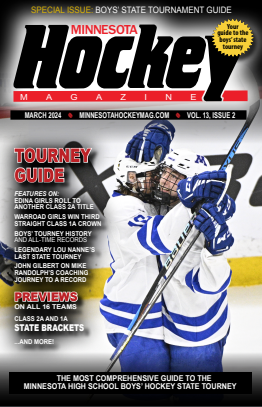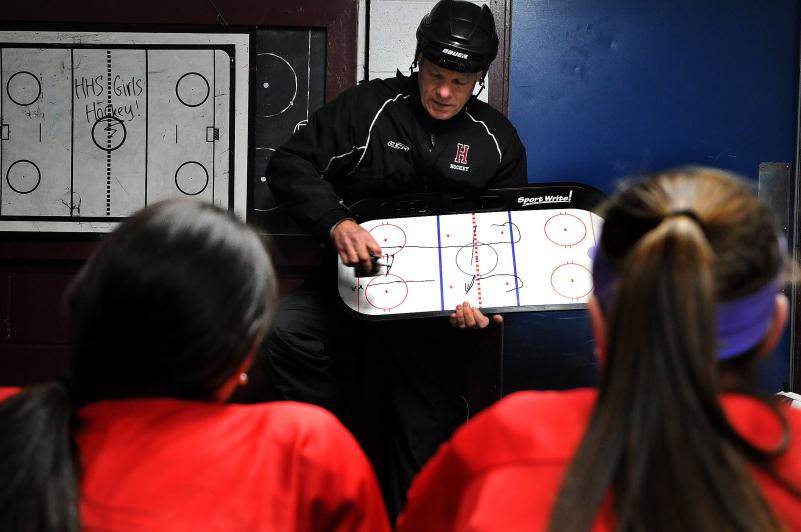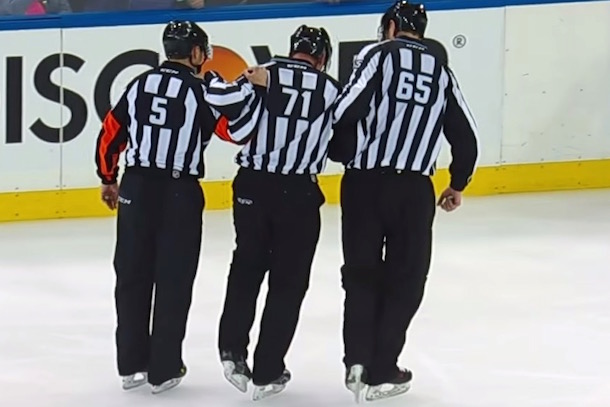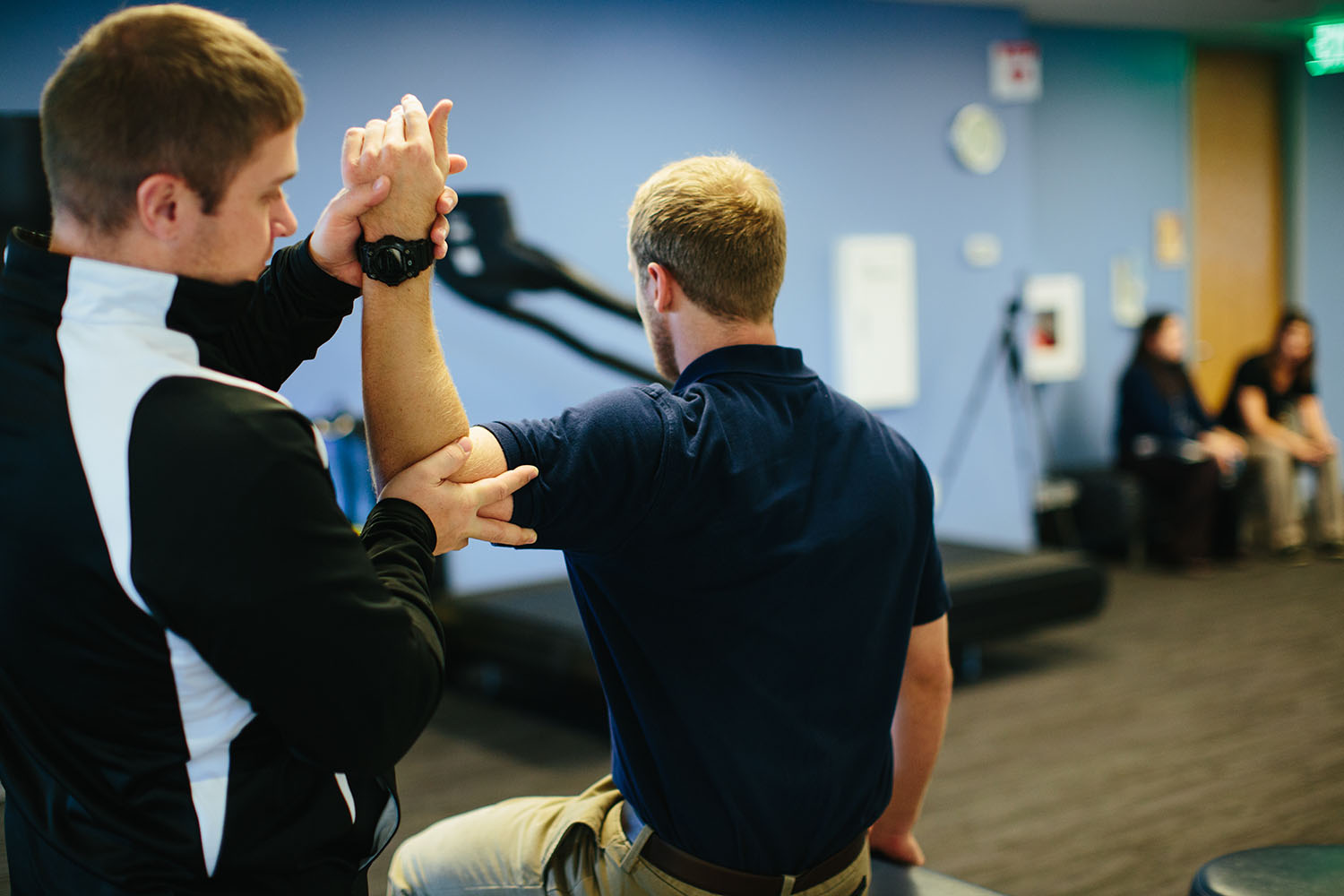
TRIA examines medial collateral ligament injuries and treatment
Hockey is a very physically demanding and high intensity sport. The nature of hockey includes rapid changes in direction, incredible hand-eye coordination, and forceful impact from opposing players. It’s no surprise that this amazing game also comes with some injuries. Among the various injuries associated with hockey, medial collateral ligament (MCL) injuries in the knee are the second most common injury in NCAA hockey behind concussions (Grant, Bedi, Kurz, Bancroft & Miller, 2013).
The MCL is one of four primary stabilizing ligaments in the knee and connects the femur and tibia on the medial (inside) aspect of the knee. The role of the MCL is to prevent excessive stretch or movement associated with the inside portion of the knee. The most common cause of an MCL sprain includes a direct blow on the outside of the knee and/or twisting motion at the knee with a planted foot. More specifically in hockey, this injury may result from getting checked low by an opponent or simply by catching a skate edge and twisting your knee.
Here are a few points to know that can help ensure a proper and speedy return to the ice:
What is the correct immediate care?
Apart from initially being painful, the inside of the knee may begin to feel tight as swelling starts to set in. Initial treatment should include RICE (Rest, Ice, Compression, and Elevation) to help control the amount of swelling in the knee. This will create an optimal environment for healing to help get you back on the ice quickly. It is important to have a health care professional such as an athletic trainer or physician to evaluate your knee. Imaging is helpful to determine the severity of the injury, and rule out any other related structures commonly associated with MCL tears such as the ACL or meniscus. Once you have a diagnosis it is vital to begin supervised rehabilitation with an athletic trainer or physical therapist to start the road to recovery.
How bad is my injury?
There are three grades of severity with all ligament injuries including the MCL. Grade I sprains can be described as an “overstretching or slight tear” of the ligament, typically resolving in 1-2 weeks. Grade II sprains are larger tears that are still partially attached and generally resolve in 3-4 weeks. Lastly, grade III sprains are complete ligament tears, typically resolving in 4-6 weeks, but can take longer depending on severity and post-injury treatment. Recovery is typically non-surgical if appropriate measures are taken, but in some grade III injuries surgery may be recommended. Recognizing the severity of the injury is a vital step towards a full recovery and prevention for re-injury.
How to get back on the ice?
It is important to understand that in most cases you can expect a full recovery. Sports equipment such as a knee brace and/or sleeve can help add support during the healing process. In addition, proper knee stabilization and strength are essential pieces of rehabilitation. Common strengthening exercises for the leg include squats and lunges while stabilization and balance are addressed with single leg standing and side to side shuffles/bounding. A well rounded rehabilitation program will also integrate the hips, core, and cross training into the recovery. In time, you will advance from dry land rehab to once again lacing up the skates for sport specific training on the ice.
Lastly, remember that everybody’s body is unique and every injury is unique. Which is why it’s important to work with health care professional(s) who specialize in sports injuries to help you attain your goals on and off the ice.
Reference
Grant, J.A., Bedi, A., Kurz, J., Bancroft, R., & Miller, B.S. (2013). Incidence and injury characteristics of medial collateral ligament injuries in male collegiate ice hockey players. Sports Health: A Multidisciplinary Approach, 5(3), 270-272.
Do you have a question for TRIA’s team of sports medicine experts? Click the image below to learn more and your question may be featured in a future TRIA article.
About TRIA Orthopaedic Center
TRIA is a comprehensive center for orthopaedic medicine, providing incomparable clinical and surgical care, world-class research, and innovative programs. TRIA Orthopaedic Center has over 40 highly-trained physicians with a variety of sub-specialties such as sports medicine, acute injury, shoulder, hip, knee, spine, hand and wrist, foot and ankle, and fractures. TRIA’s sports medicine specialists have served as official team physicians for Minnesota’s professional sports teams for over 25 years. TRIA offers walk-in care through the Acute Injury Clinic, 8:00 a.m. to 8:00 p.m. seven days a week, no appointment needed. From diagnosis to treatment, to rehabilitation and even surgery, it is all at one convenient location at I-494 and France Avenue in Bloomington, Minnesota. For more information, visit tria.com.
Reggie appreciates the opportunity to help people improve their health and well-being on a daily basis as an outreach athletic trainer for Washburn High School. He focuses on injury prevention through proper biomechanics and maintenance of stability and mobility. Another passion of his is treating soft tissue injuries, because the process of how the body heals is simply amazing. In his free time, he enjoys playing tennis and golf, as well as motorcycling and snowmobiling.













